new posts in all blogs
Viewing: Blog Posts Tagged with: 1972, Most Recent at Top [Help]
Results 1 - 9 of 9
How to use this Page
You are viewing the most recent posts tagged with the words: 1972 in the JacketFlap blog reader. What is a tag? Think of a tag as a keyword or category label. Tags can both help you find posts on JacketFlap.com as well as provide an easy way for you to "remember" and classify posts for later recall. Try adding a tag yourself by clicking "Add a tag" below a post's header. Scroll down through the list of Recent Posts in the left column and click on a post title that sounds interesting. You can view all posts from a specific blog by clicking the Blog name in the right column, or you can click a 'More Posts from this Blog' link in any individual post.
Frog and Toad Together. Arnold Lobel. 1972. HarperCollins. 64 pages. [Source: Library]
One morning Toad sat in bed. "I have many things to do," he said. "I will write them all down on a list so that I can remember them." Toad wrote on a piece of paper: A List of Things To Do Today. Then he wrote: Wake Up. "I have done that," said Toad, and he crossed out: wake up. Then Toad wrote other things on the paper.Oh how I love Frog and Toad! I do! This book contains five stories: A List, The Garden, Cookies, Dragons and Giants, and The Dream.
In the first story, "The List," Toad panics when he loses his to-do list. The ever-supportive Frog is there by his side, but it may take a while to calm this worried Toad!
In the second story, "The Garden," Toad is envious of his friend Frog's garden. Though Frog warns him that a garden takes a lot of work, and a lot of patience, Toad isn't concerned. He wants a garden and he wants it NOW. Will Toad succeed in his gardening attempt?
The third story, "Cookies," is one of my FAVORITE FAVORITE FAVORITE stories of all time. Toad bakes some cookies. He even decides to share with his friend, Frog. But when they become unable to stop eating the oh-so-delicious cookies, then Frog insists that they have will power. Toad is less than enthused. Especially when he sees that Frog means to give his cookies to the birds. What will Toad do next?
"You know, Toad," said Frog, with his mouth full, "I think we should stop eating. We will soon be sick."
"You are right," said Toad. "Let us eat one last cookie, and then we will stop."
Frog and Toad ate one last cookie. There were many cookies left in the bowl.
"Frog," said Toad, "let us eat one very last cookie, and then we will stop."
Frog and Toad ate one very last cookie.
"We must stop eating!" cried Toad as he ate another.
"Yes," said Frog, reaching for a cookie, "we need will power."
"What is will power?" asked Toad.
"Will power is trying hard not to do something that you really want to do," said Frog.
"You mean like trying not to eat all of these cookies?" asked Toad.
"Right," said Frog. (32-35)
Of course, the scene just gets better and better and better!
The fourth story "Dragons and Giants" doesn't thrill me. But it could be because it follows "Cookies," and it would take a LOT to top that! In this one, Frog and Toad decide to see how brave they are! They find they are very brave safe at home in the closet and in the bed.
© 2016 Becky Laney of
Becky's Book Reviews
In A People House. Dr. Seuss. (Theo LeSieg) Illustrated by Roy McKie. 1972. Random House. 36 pages. [Source: Library]
First sentence: "Come inside, Mr. Bird," said the mouse. "I'll show you what there is in a People House...A People House has things like...chairs things like roller skates and stairs.
Premise/plot: Is there a plot? Perhaps a slight one. A mouse is showing a bird around a people house. Each page is filled with words of things in a people house. But there isn't exactly a compelling story. It seems a random waste, in my opinion.
piano
peanuts
popcorn
pails
pencil
paper
hammer
nails
My thoughts: Not a favorite. I didn't really like it at all. True, it's silly, especially at the end. True, it rhymes. But it doesn't seem as good as it should be if it's Seuss.
Have you read In A People House? Did you like it? love it? hate it? I'd love to know what you thought of it!
If you'd like to join me in reading or rereading Dr. Seuss (chronologically) I'd love to have you join me! The next book I'll be reviewing is Did I Ever Tell You How Lucky You Are.
© 2015 Becky Laney of
Becky's Book Reviews

By:
Becky Laney,
on 6/10/2015
Blog:
Becky's Book Reviews
(
Login to Add to MyJacketFlap)
JacketFlap tags:
Nonfiction,
Holocaust,
autobiography,
World War II,
Newbery Honor,
YA nonfiction,
children's classic,
mg nonfiction,
library book,
1972,
Add a tag
The Upstairs Room. Johanna Reiss. 1972. HarperCollins. 208 pages. [Source: Library]
I am so glad I decided to read Johanna Reiss' The Upstairs Room. This one has been on my list of books I needed to read for quite a while--over a decade at least. It is nonfiction--a biography--set during World War II. The author and her sister were Jews that hid for several years from the Nazis.
Readers meet Annie, the young heroine, and her family. She has several older sisters, a mother and father. The war changes everything for the family. The mother, who was close to death anyway--the Nazis invasion of Holland didn't really change the outcome. The family found hiding places, but, separate hiding places. Annie was placed in a hiding place with one of her sisters. Readers meet the two families that hid the two girls. One family became like a second family to her. I found the book to be a quick read, and quite intense.
The book itself was well-written: both compelling and well-paced. What surprised me a little bit, and what might surprise others as well, is the language. I wasn't expecting (strong) profanity in a Newbery Honor book! I really wasn't. That being said, it wasn't a huge issue for me--as an adult reader. But I could see how it might not work for certain families as a read-aloud choice.
© 2015 Becky Laney of
Becky's Book Reviews

By:
Becky Laney,
on 12/19/2014
Blog:
Becky's Book Reviews
(
Login to Add to MyJacketFlap)
JacketFlap tags:
Christmas,
J Fiction,
J Realistic Fiction,
children's classic,
MG Fiction,
1972,
books reviewed in 2014,
books reread in 2014,
MG Realistic Fiction,
Add a tag
The Best Christmas Pageant Ever. Barbara Robinson. 1972. HarperCollins. 128 pages. [Source: Bought]
Is The Best Christmas Pageant Ever the best Christmas book ever? It might just be. I know I prefer it to Charles Dickens' A Christmas Carol. One reason why I do is because the book truly captures the getting-it moment, the moment when one realizes the true meaning of Christmas. A Christmas Carol may do an adequate job of "getting" the generosity of Christmas, but it is a Christ-less Christmas story. There is nothing in A Christmas Carol that would point you towards the real meaning of Christmas: the birth of a Savior. The Best Christmas Pageant does just that. And it doesn't sacrifice entertainment or humor. In fact, it is probably one of the funniest children's books ever. Here's how it opens:
The Herdmans were absolutely the worst kids in the history of the world. They lied and stole and smoked cigars (even the girls) and talked dirty and hit little kids and cussed their teachers and took the name of the Lord in vain and set fire to Fred Shoemaker's old broken-down toolhouse. The toolhouse burned right down to the ground, and I think that surprised the Herdmans. They set fire to things all the time, but that was the first time they managed to burn down a whole building. I guess it was an accident. I don't suppose they woke up that morning and said to one another, "Let's go burn down Fred Shoemaker's toolhouse"...but maybe they did. After all, it was a Saturday, and not much going on.
There are six Herdmans in all: Ralph, Imogene, Leroy, Claude, Ollie, and Gladys. The premise of this one is oh-so-simple: what if the yearly Christmas pageant was overrun with Herdmans? What if the WORST kids in town, possibly the WORST kids in the world, got the best roles in the Christmas pageant? What would it be like for the director(s)? What would it be like for the other kids? What would it be like for the audience? What no one was expecting was that the story itself would have an impact on the actors leading it to be THE BEST CHRISTMAS PAGEANT EVER.
It is narrated in the first person. I believe it is told from the perspective of the director's daughter. As I mentioned, it is hilarious and touching all at the same time. Though the 'touching' bit--the sentimental bit--is towards the very, very end.
I loved this one. I've read it again and again and again and again. It is well worth reading every year or every other year. It has a just-right feel about it. I think it is true enough to life. It captures the familiarity of the Christmas story. Almost everyone knows the story backwards and forwards. Everyone knows it so very well that none of the characters consider it. They don't process it or absorb it. But the Herdmans. Well. They have NEVER heard it. They don't find it boring or irrelevant. They find it absorbing and interesting. The details, big and small, are fresh to them. They are thinking of the story in a fresh way, in a human way. Not in a been-raised-in-church-my-whole-life way. So it captures the DRAMA of the Christmas story in a fresh way. Readers get a behind-the-scenes look at someone seeing/hearing the story for the very first time. The Herdmans take nothing for granted, assume nothing. They have questions, dozens and dozens of questions. The book isn't overly preachy either. It isn't that someone reads the story the first time, and all six kids suddenly decide to pray a little prayer and get baptized. It is not like that at all. Yet I can't help but seeing the spirit working in this story.
© 2014 Becky Laney of
Becky's Book Reviews

By:
Becky Laney,
on 7/6/2014
Blog:
Becky's Book Reviews
(
Login to Add to MyJacketFlap)
JacketFlap tags:
classics,
picture books,
cats,
J Fiction,
early readers,
2005,
1969,
1973,
children's classic,
1949,
1947,
1954,
1960,
1957,
1972,
books reviewed in 2014,
Add a tag
The School for Cats. Esther Averill. 1947/2005. New York Review Children's Collection. 32 pages. [Source: Library] The School for Cats was originally published in 1947. It is part of a larger series of books starring the (black) cat Jenny Linsky and her friends. The School of Cats is not the first in the series, but, it is the first in the series that my library actually had. In this "Jenny's Cat Club" book, readers meet Jenny as she leaves her home in Greenwich Village to attend school in the country. She is very, very, very unsure about the whole school thing. But her master, Captain Tinker, wants her "to study cat lore in the country." There is definitely something of an adventure in this one when Jenny runs away from school. But it also contains a lesson on friendship and adapting to new situations.
I enjoyed this one. I look forward to reading others in the series.
Jenny's Moonlight Adventure. Esther Averill. 1949/2005. New York Review Children's Collection. 32 pages. [Source: Library]Jenny's Moonlight Adventure was originally published in 1949. It is part of a larger series of books starring Jenny and her friends. I did not like this book as well as The School for Cats. It is a Halloween adventure. Jenny must prove how brave she is both for herself and for her friends. She reluctantly accepts a job that only she can do. She is to carry a nose flute to a sick friend (another cat, of course). The job is "dangerous" because it requires her to be brave and clever enough to get past several unfriendly neighborhood dogs.
For readers who celebrate Halloween, this one might prove charming.
Jenny Goes to Sea. Esther Averill. 1957/2005. New York Review Children's Collection. 140 pages. [Source: Library]Of the Jenny Linsky books I've read so far, Jenny Goes to Sea is probably my favorite. In this chapter book originally published in 1957, Jenny Linsky and her two brothers, Edward and Checkers, travel the world with their owner, Captain Tinker. These three cats become very good friends with Jack Tar, the ship's cat. These three leave the ship in company with Jack Tar at many of the ports including Capetown, Zanzibar, Singapore, and Bangkok. Adventures come oh-so-naturally.
I definitely recommend this series to cat lovers of all ages.
Jenny and the Cat Club: A Collection of Favorite Stories About Jenny Linsky. Esther Averill. 1973/2003. New York Review Children's Collection. 176 pages. [Source: Library]Jenny and the Cat Club features five stories by Esther Averill. These were originally published in 1944, 1948, 1951, 1952, and 1953. The stories are: "The Cat Club," "Jenny's First Party," "When Jenny Lost Her Scarf," "Jenny's Adopted Brothers," and "How the Brothers Joined the Cat Club."
The Cat Club introduces readers to Jenny Linsky, a "shy little black cat" from New York City. Readers meet Jenny and her owner Captain Tinker. In this adventure, Jenny receives her signature red scarf, a present from her owner who happens to knit. This red scarf helps Jenny gain enough confidence to talk to other cats in the neighborhood. In this one, readers learn about the neighborhood cat club, they are briefly introduced to the other cats, and they learn that members of the cat club must be special.
Jenny's First Party is a story focusing on Jenny and her friend Pickles (the fire cat) teaming up and strolling the neighborhood. Both are looking for fun, fun, fun. But neither have money. (What cat has money?!) They stumble upon a groovy party and a great time is had by all. Readers learn that Jenny can dance a happy little sailor's hornpipe dance.
"When Jenny Loses Her Scarf" is about when Jenny's beloved red scarf was stolen by a dog. The dog, Rob the Robber, refuses to give it back. Jenny seeks help from Pickles the fire cat. Pickles is just the one to help her, it turns out, for justice is dealt out after all. The dog's hangout catches on fire! Pickles retrieves the scarf as he's putting out the fire.
"Jenny's Adopted Brothers" is about when Jenny meets two stray cats: Checkers and Edward. Checkers, readers learn, retrieves things. Edward, we learn, is a poet. Jenny meets these two, feels sorry for them, and introduces them to Captain Tinker. When these two are adopted by the Captain, Jenny feels very jealous! Will having two other cats in the house prove too much?!
"How The Brothers Joined the Cat Club" is obviously about when Edward and Checkers join the club. Jenny is hesitant to include her two new brothers at first. After all, she likes the idea that the club could remain her own little secret and her way to get away from them. But. Being the good little cat that she is, Jenny soon realizes that she could never really keep her brothers from missing out on the awesomeness of the cat club. She helps them discover their talents and introduces them to all her friends.
I liked this one. I did. I like meeting Jenny and the other cats.
The Hotel Cat. Esther Averill. 1969/2005. New York Review Children's Collection. 180 pages. [Source: Library]The Hotel Cat is an enjoyable children's novel by Esther Averill. It was originally published in 1969.
The Hotel Cat stars a cat named Tom. He lives at the Royal Hotel, an eight-story building in New York. It is on the older side. And the hotel isn't doing the best business. But all that happens to change during the novel. Tom who is used to having the place to himself, for the most part, at least in terms of CATS ON THE PLACE discovers that there are cats there with their owners. The first few cats he meets he is rude, very rude. But after Tom's owner, Mrs. Wilkins, talks to him, he decides to be more gracious and welcoming. It isn't long before he meets three cats: Jenny, Edward, and Checkers. And those aren't the only cats from the cat club he happens to meet. A difficult winter has resulted in a lot of broken boilers and frustrated cat-owning homeowners are staying at the Royal Hotel. How convenient!
Tom learns a lot about making and keeping friends in The Hotel Cat.
I liked this one.
Captains of the City Streets. Esther Averill. 1972/2005. New York Review Children's Collection. 164 pages. [Source: Library] Captains of the City Streets is a children's novel by Esther Averill originally published in 1972. Two cats star in Captains of the City Street. In this one, the author provides the back story for two cats who have been a part of essentially the whole series. Sinbad and The Duke. These two stray cats are best buddies. They haven't been "owned" by a human in what seems like a very long time by cat reckoning. They are street cats, traveling cats, going from city to city to city, seeing all there is to see, always seeking handouts, but never becoming dependent on any one human. The two travel to "old New York." They are looking for a place of their own, a safe place to stay. They find it. They also find one old man who dependably gives them food day after day on their own terms. He comes and goes leaving the food, never trying to approach the cats, never pushing a relationship. The two cats slowly but surely decide that maybe just maybe humans aren't all that bad. That is when they stumble upon the Cat Club. They learn that the kind human is Captain Tinker. The first cat they befriend is Macaroni. The two are invited to join the Cat Club, but, are hesitant. Do they want to stick around that long? Do they want the responsibility?
I liked meeting Sinbad and Duke. The stories that focus on Jenny certainly mention these two quite a bit, but, this is the first time that readers really learn about these two in detail. It is a fun book.
Jenny's Birthday Book. Esther Averill. 1954/2005. New York Review Children's Collection. 44 pages. [Source: Library] Jenny's Birthday Book by Esther Averill was originally published in 1954. In this cat club book, Jenny Linsky, our star cat, our shy little black cat with the red scarf, has a special birthday with all of her friends whom we've met through the series. Pickles. Sinbad and The Duke. Florio. To name just a few. It is a lovely birthday. The book itself is sweet, simple, and charming. Especially if you like cats and vintage picture books. I think my favorite illustration is of all the cats dancing the Sailor's Hornpipe in the park.
The Fire Cat. Esther Averill. 1960/1983. HarperCollins. 64 pages. [Source: Own] I enjoyed revisiting The Fire Cat by Esther Averill. I read this one many times as a child. But I had no idea it was part of a larger series of books, the Cat Club series by Esther Averill. The Fire Cat does not star Jenny Linsky. It stars Pickles. Pickles has been a delightful character in almost all of the other books in the series. He is probably one of Jenny's best best friends. In the Fire Cat, readers learn more about Pickles. Was he always a fire cat? Of course not! There was a time he was a hopeless cat that was a little bit bad and a little bit good. One of the firemen takes an interest in him and takes him to the fire station. He is hoping that the chief will allow Pickles to stay. Pickles most definitely wants to stay. He wants to prove himself worthy, so he decides to learn by example. He learns to slide down the pole, for example, he learns how to work a hose. The fire chief is definitely charmed, I imagine cat-loving readers are just as charmed. I certainly was! The Fire Cat is a feel-good read. Readers see Pickles transform from a slightly-naughty homeless cat to a brave and dutiful fire cat. He learns responsibility and compassion. Overall, it's just a good story.
© 2014 Becky Laney of
Becky's Book Reviews
Magic in the Park. Ruth Chew. 1972/2014. Random House. 144 pages. [Source: Review copy]
Magic in the Park is a quick fantasy read. Jennifer, our heroine, has just moved to Brooklyn. At first, she is so focused on what she's missing, that she is more than a little bitter. However, after discovering nearby Prospect Park and meeting a new friend, a prone-to-falling-in-the-lake lad named Mike, she embraces her new life. It isn't just that Mike is great fun all on his own. It is, in part, that these two discover things together and keep secrets. They discover that Prospect Park is more than a little magical. They both happen to notice that there is one tree in particular, an old tree, a seemingly hollow tree, that MOVES around the park. You never know where you'll find it next. And some days...it's not there at all. On those days, the children see a friendly old man who feeds the birds. Birds are important in this one.
Magic in the Park is fantasy adventure. Mike and Jennifer are curious, of course. All children in fantasy novels seem to be extra curious, this helps them stumble into various adventures I suppose.
© 2014 Becky Laney of
Becky's Book Reviews

By:
Becky Laney,
on 11/12/2012
Blog:
Becky's Book Reviews
(
Login to Add to MyJacketFlap)
JacketFlap tags:
science fiction,
adult fiction,
short stories,
1968,
1969,
Adult Science Fiction,
book I bought,
1972,
Books reviewed in 2012,
Add a tag
The Star Trek Reader. Twenty-one Novelized Episodes Based on the Exciting Television Series Created by Gene Roddenberry. James Blish. 1968, 1969, 1972. Dutton. 372 pages.
This is the first volume in the book series of adaptations by James Blish. It contains three books, "Star Trek 2," "Star Trek 3," and "Star Trek 8." It was a great introduction to Blish's work. It features stories like, "The Trouble with Tribbles," "The City on the Edge of Forever," "Friday's Child," "Tomorrow is Yesterday," etc.
What surprised me is that I found myself liking the short story adaptations even when I didn't particularly remember liking the episode it was based on. (Though Spock's Brain didn't exactly improve.)
For anyone who loves the characters, the stories, the friendships, the themes of Star Trek The Original Series, this is a MUST. I enjoyed it very much. There is definitely something comforting and satisfying about it. I definitely want to reread it!
Read The Star Trek Reader
- If you enjoy vintage science fiction
- If you enjoy Star Trek The Original Series
- If you enjoy short stories
© 2012 Becky Laney of
Becky's Book Reviews

By:
Becky Laney,
on 2/7/2012
Blog:
Becky's Book Reviews
(
Login to Add to MyJacketFlap)
JacketFlap tags:
classics,
adult fiction,
1924,
Adult Science Fiction,
1921,
book I bought,
1972,
Books Reviewed in 2012,
science fiction,
Add a tag
We. Yevgeny Zamyatin. Translated by Mirra Ginsburg. 1921/1972*. HarperCollins. 233 pages.
I shall simply copy, word for word, the proclamation that appeared today in the One State Gazette... We is a dystopian novel. I've been wanting to read it for almost as long as I've been blogging.
What did I think of We?
I found the novel interesting but not necessarily comprehensible. I struggled to make sense of this one. (I think I followed about a third of it.) I'm sure I missed much of what was going on simply because I was trying to make sense of this world, this society. Could the problem--for me--be this society's emphasis on math and logic?
The narrator of We is a state mathematician named D-503. (I did figure out that men have a consonant and an odd number; women have a vowel and an even number). Everything is calculated and precise and governed or regulated. Even intimate relationships. D-503 has two registered partners--O-90 and I330. O-90 desperately wants a child, a dream that isn't likely to come true. And I330 is a big, big tease who manipulates men in oh-so-many ways. Perhaps because D-503 cannot understand her at all, cannot predict anything about her, she fascinates him, enslaves him.
So one of D-503's projects is working on the spaceship, Integral. One State has plans to conquer the universe. Perhaps because of what he does, I-330 sees an opportunity to use him to get what she wants...
A human being is like a novel: until the last page you don't know how it will end. Or it wouldn't be worth reading... (162)
Read We
- If you are looking for a literary quality to your science fiction
- If you enjoy a challenge as you read; if you enjoy complexity
- If you are looking to read a science fiction classic
- If you are interested in Russian literature from this time period
*It was first translated into English (according to Wikipedia) in 1924, this translation by Mirra Ginsburg was done in 1972.
© 2012 Becky Laney of
Becky's Book Reviews
Elephants Can Remember. Agatha Christie. (Hercule Poirot). 1972. 212 pages.
Mrs. Oliver looked at herself in the glass. While I tend to prefer Miss Marple to Hercule Poirot most of the time, when Christie's Poirot novels feature Ariadne Oliver, it becomes trickier to play favorites. For Ariadne Oliver is a writer, a writer of detective fiction or mysteries. And her perspective on the genre--and on writing in general--which is shared with readers is just fun. In Elephants Can Remember, Mrs. Oliver is approached by a woman who is memorable for all the wrong reasons:
A large woman. Ample proportions, large white champing teeth. What in French could have been called une femme formidable, but who definitely had not only the French variety of being formidable, but the English one of being supremely bossy. Obviously she either knew Mrs. Oliver, or was intent on making her acquaintance there and then. The last was how it happened to go. (8)
Mrs. Burton-Cox is "concerned" about her son who is contemplating marrying Mrs. Oliver's goddaughter. Now, Mrs. Oliver has had many goddaughters through the decades, and this particular one has slipped her mind completely. Well, until forced to remember by Burton-Cox's persistence. Celia Ravenscroft is the goddaughter in question, the "inappropriate" young woman, that Burton-Cox does not want for her daughter-in-law. Why? Well, there was a family tragedy when Celia was just a girl. Her parents died in an apparent suicide. No one knows if her father shot her mother or if her mother shot her father. No one knows what provoked this murder-suicide. Was her mother involved with another man? Was her father involved with another woman? And though it seems almost everyone has forgotten this tragedy except Mrs. Burton-Cox, she's convinced that Celia is not good for her son.
Mrs. Oliver is annoyed by Mrs. Burton-Cox. But she is also curious. She was out of the country when the tragedy happened all those years ago, and, well, part of her wants to know the truth--or as much of the truth can be discerned or concluded--herself. So she decides that if Celia will give her blessing, she'll begin to snoop around. And she'll even call her old friend, Hercule Poirot. He may be able to connect the dots and solve this one.
I enjoyed this one. I did. I don't know that it is my favorite Agatha Christie, but it is a good read.
Favorite quote:
"Human curiosity," said Poirot. "Such a very interesting thing." He sighed. "To think that we owe to it throughout history. Curiosity. I don't know who invented curiosity. It is said to be usually associated with the cat. Curiosity killed the cat. But I should say really that the Greeks were the inventors of curiosity. They wanted to know. Before them, as far as I can see, nobody wanted to know much. They just wanted to know what the rules of the country they were living in were, and how they could avoid having their heads cut off or being impaled on spikes or something disagreeable happening to them. But they either obeyed or disobeyed. They didn't want to know why. But since then a lot of people have wanted to know why and all sorts of things have happened because of that. Boats, trains, flying machines and atom bombs and penicillin and cures for various illnesses. A little boy watches his mother's kettle raising its lid because of the steam. And the next thing we know is we have railway trains, leading on in due course to railway strikes and all that. And so on and so on." (25)
"As one journeys through life," said Poirot, "one finds more and more that people are often interested in things that are none of their business. Even mor




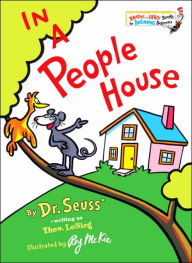

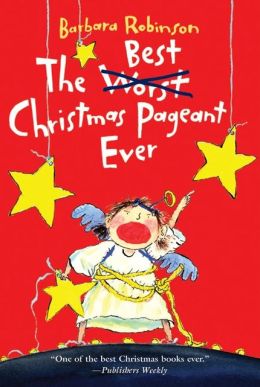
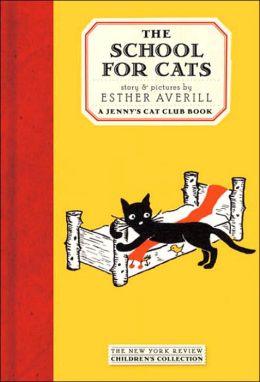
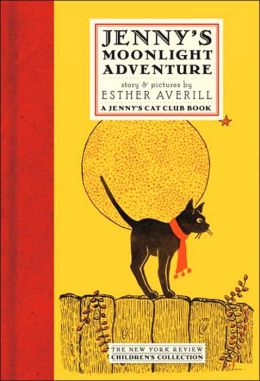

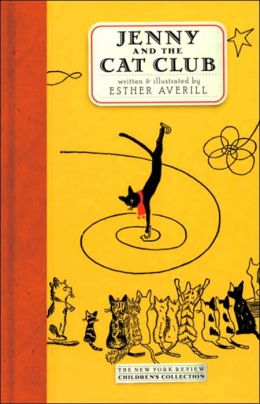
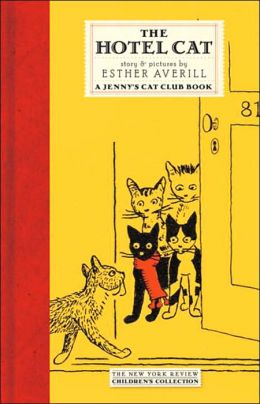

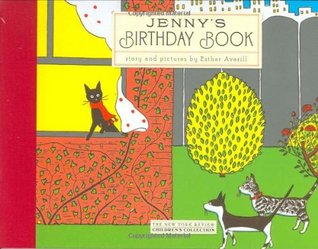

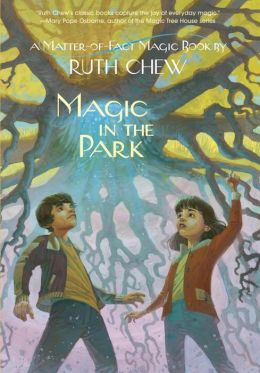



I've tried to go back and watch episodes on Netflix, and I just can't. It was great when I was a kid (so was Buck Rogers!), but I can't watch it anymore. But in print I could see it working.